
Another interesting fact: a lot of the darker, new tiles (the replacements) are located over antennas, which we sometimes used as convenient access points for airframe structural inspections between flights. /1
https://twitter.com/marsrader/status/1530572379797217280
2/ You can tell these are the antenna locations by the four white chevrons painted onto the tiles around each antenna. We used those to align ground-testing antennas to verify the comm/nav systems worked before the next flight. 

3/ Another interesting fact: each tile has a hole in it with a white circle painted around the hole so technicians could find it. That hole was used to inject water-proofing spray into the inside of every single tile before each rollout to the launch pad. I marked a few examples: 

4/ Oh, but why did we have to spray water-proofing spray inside each and every Space Shuttle tile before every launch? Those tiles protect against the super hot plasma during re-entry from space, and we know there isn’t any water up there! I’m glad you asked… 

5/ The problem was that the Space Shuttle had to sit through frequent rainstorms while it was on the launch pad, and if rain seeped into the tiles then it would add a huge amount of weight to the vehicle, which could prevent it from achieving the desired orbit. 

6/ But why weren’t the tiles simply sealed so the rain couldn’t get in? I mean, if you had to cut a hole in the surface to inject the water-proofing spray, then the water shouldn’t be able to get in anyhow, right? Well no, because we couldn’t actually seal the tiles. Why not?… 

7/ Because the tiles were 90% hollow and were filled with air, and when the Space Shuttle flew up into the vacuum of space, the air needed to easily get out of the tiles or then pressure would make them explode and then they would not protect the Shuttle during landing. 

8/ But why were they 90% hollow? Because the whole point of them was to be excellent insulators during hot re-entry from space. They were made of tiny silica fibers that barely touched each other so heat could barely conduct through them. 

9/ Here’s an interesting video on how they were made. They were such good insulators you could heat them to glowing-hot while holding them in your hand. newsflare.com/video/173291/w… 
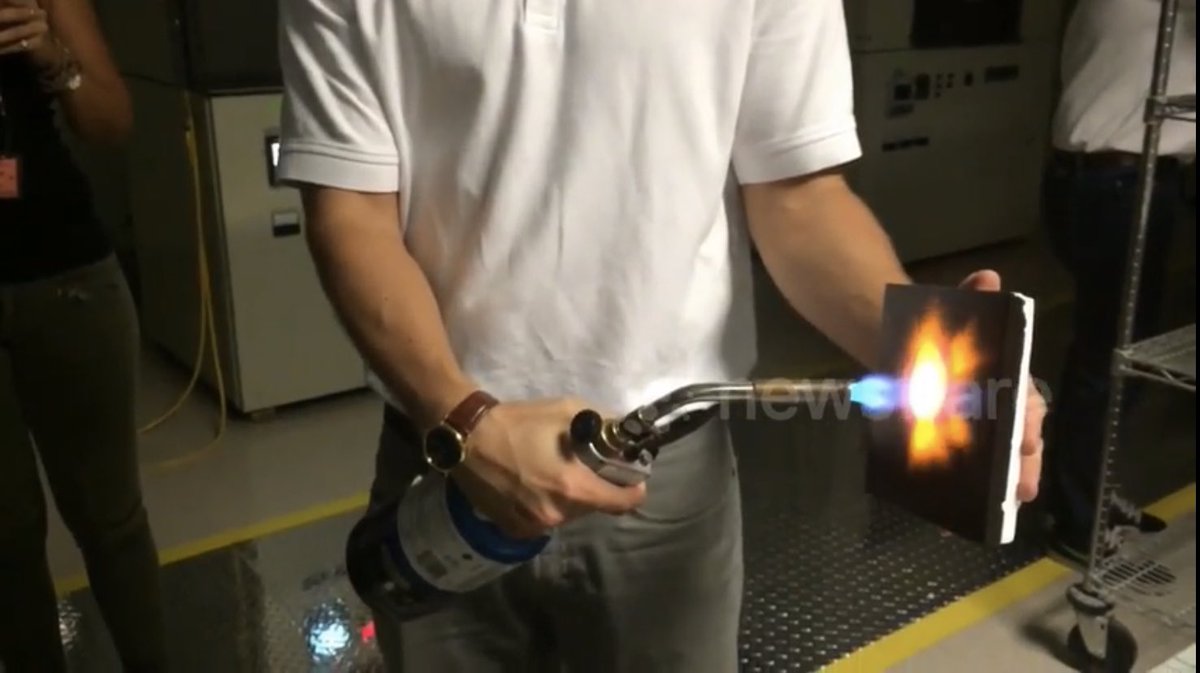
10/ So then, if they had to let air out while launching, and the coating couldn’t keep water out, then why have the coating? Two reasons. 1st, to be a smooth surface so the plasma would flow without turbulence over the surface during entry to minimize heating. And… 

11/ 2nd, to have high emissivity in the desired wavelengths so heat that *did* get into the tiles from the hot plasma would radiate back to space more easily than go into the skin of the Space Shuttle. Thus, they were black over the hotter parts, white over the cooler parts. 
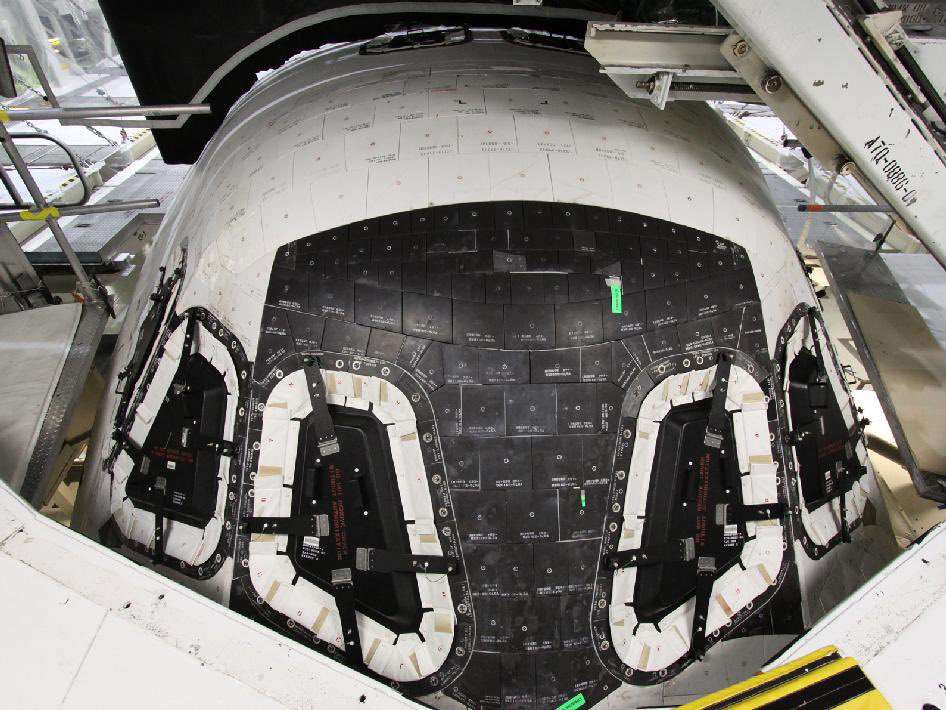
12/ So they were hollow, filled with air that needed to get out while the Shuttle was “going uphill”, but they had to be coated which would restrict the air getting out. So the coating was simply left off near the base of every tile, allowing the air an escape path. 

13/ So that escape path for the air meant that the rain could get into the tiles before launch, weighing the vehicle down tremendously, and that would have been a giant problem! 

14/ Part of the reason this problem was so giant was that the silica fibers that make up the body of each tile are hydrophilic — “water loving”. Water clings to it. Any water that got into a tile would never want to come out again. It would become happy water inside its new home. 
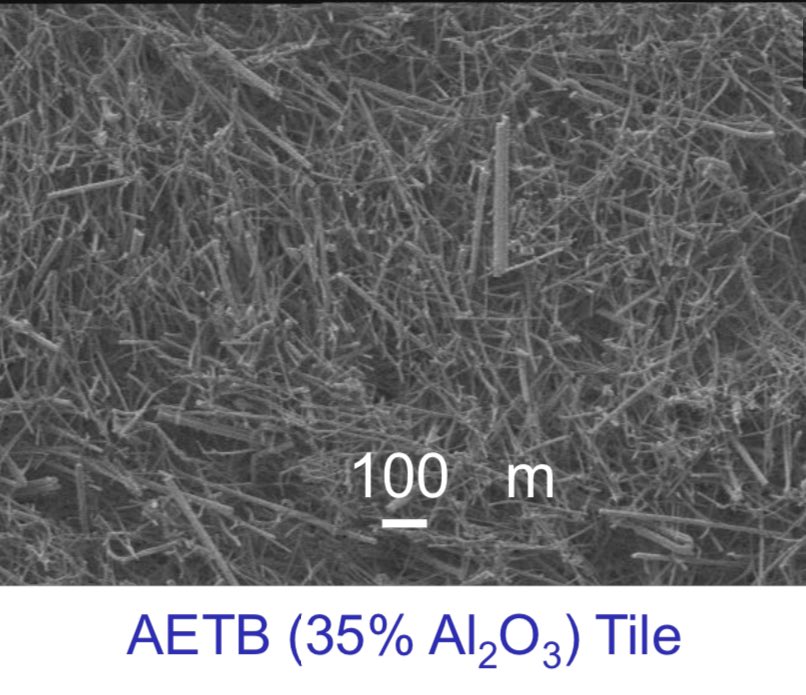
15/ Materials are sometimes classified as hydrophobic — water tries to get away from it — or hydrophilic — water clings to it. The coating on this leaf is hydrophobic, so water beads-up and wants to run off the leaf. (Source: scitechdaily.com/more-efficient…) 

16/ The fibers in jeans are hydrophilic, so if you go snow skiing you get wet. That’s why, back in the day, we used Scotchgard on jeans to go skiing. Scotchgard is hydrophobic. It’s pretty much the same thing we sprayed into Shuttle tiles. 
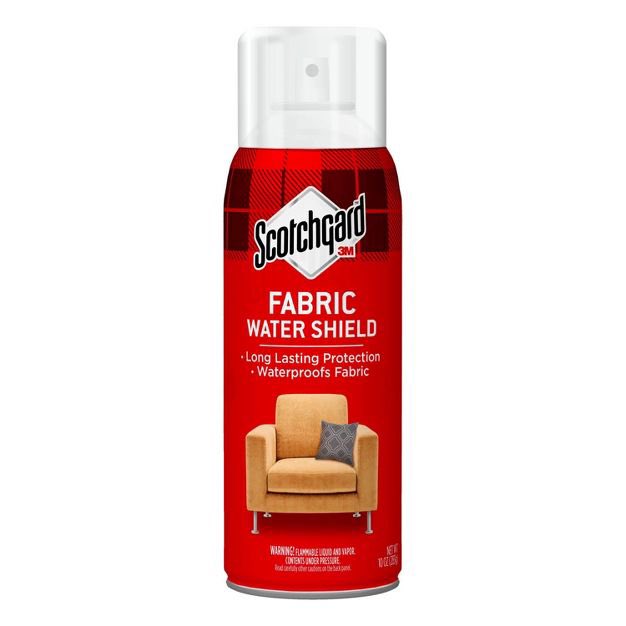
17/ Remember learning about a meniscus back in high school or college chemistry lab? It’s that curve of the water inside a glass container. That’s because glass is hydrophilic, so water loves it and wants to climb up the sides of the glass. Shuttle tile fibers are silica (glass). 

18/ After installing the tiles, we could not get access to the uncoated parts of the tile to spray “Scotchgard” into each tile to keep the rain out, so they had to poke the little holes in the coating of each tile (in the little circles in this picture) to inject the spray. But… 

19/ …now your gonna ask, why not just spray in the Scotchgard BEFORE installing the tiles, when we still had access to the uncoated parts near the base of each tile? Wouldn’t that be easier than injecting each tile one-by-one AFTER installation? Well… 

20/ The problem was that the “Scotchgard” burns out of the tiles during that super hot re-entry. It was vaporized by the heat and then it escaped from the tiles the same way the air escaped. So we had to reinject it into every tile all over again before every flight. 

21/ So we had hollow tiles for heat protection, high emissivity coating on the tiles, a gap in the coating to let the air out, Scotchgard for inside the tiles to keep the rain out, and tiny holes to spray the Scotchgard in after every landing before going back out to the pad. BUT
22/ There was still one problem. Sometimes the Shuttle came back from a mission, freshly burned-out from all its Scotchgard, and before it was towed back to the hangar a thunderstorm rolled in and the tiles got soaked full of water. Florida weather changes fast. 

23/ So then we are back to square one: how do we get those tons of water to come back out of the hydrophilic tiles before spraying in the new Scotchgard? Heat lamps did not work. It just moved the water around the outside of the vehicle to the cold side, never leaving the tiles.
24/ I used to be a Space Shuttle comm/nav engineer and later became a physicist. My first physics project at NASA was to study how to get water out of the Space Shuttle tiles. I did experiments filling them with water and sucking it back out using a vacuum hose on the same holes. 
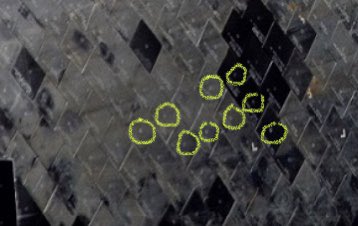
25/ It was a really cool condensed matter project because the water droplets did a directed (but randomized) walk through the fibers, with denser fibers holding the water more tightly so it was diffusion thru random potential wells. It resulted in stretched exponential curves. 

26/ In the end we used those results to help decide how long to suck on the tiles before removing the suction cups and moving on to the next batch of tiles. The system could suck the Shuttle dry in a few days, whereas heat lamps took months and still couldn’t get the water out.
27/ So when I look at Shuttle tiles I think of those 2 things: the white chevrons marking the comm/nav antennas which I worked on for 10 years as part of the launch team, then the tiny holes where we sucked water out after (later) becoming a physicist. Fond memories! /end 

• • •
Missing some Tweet in this thread? You can try to
force a refresh




